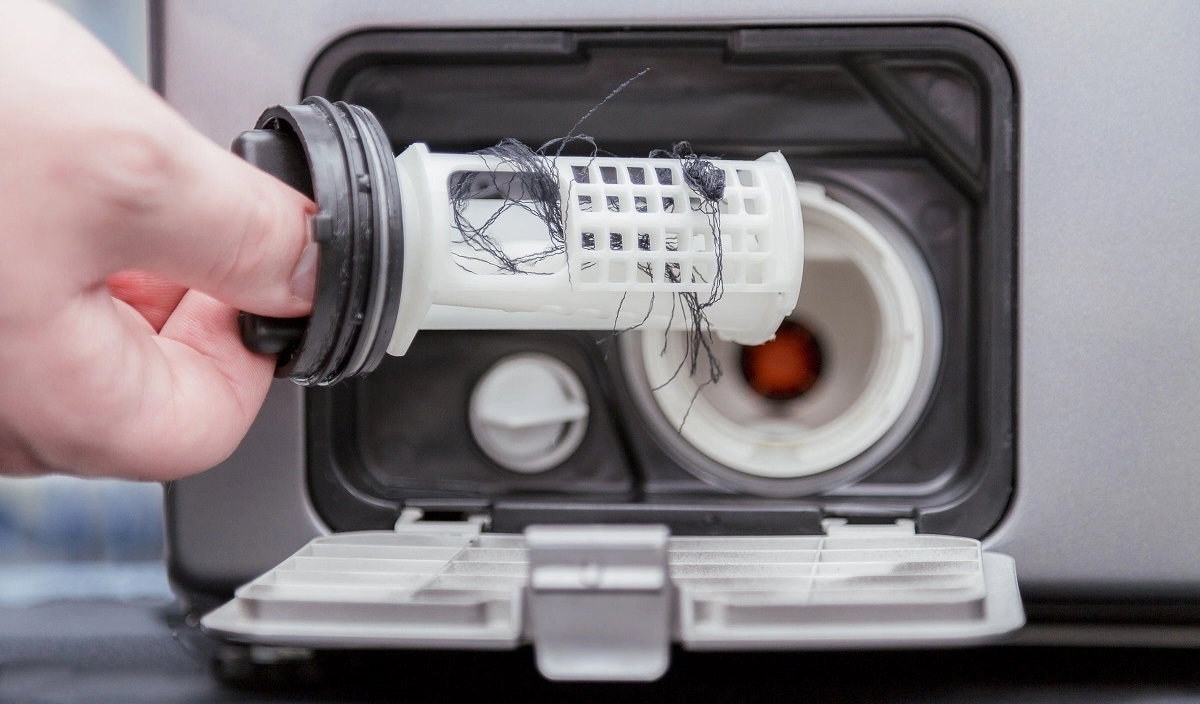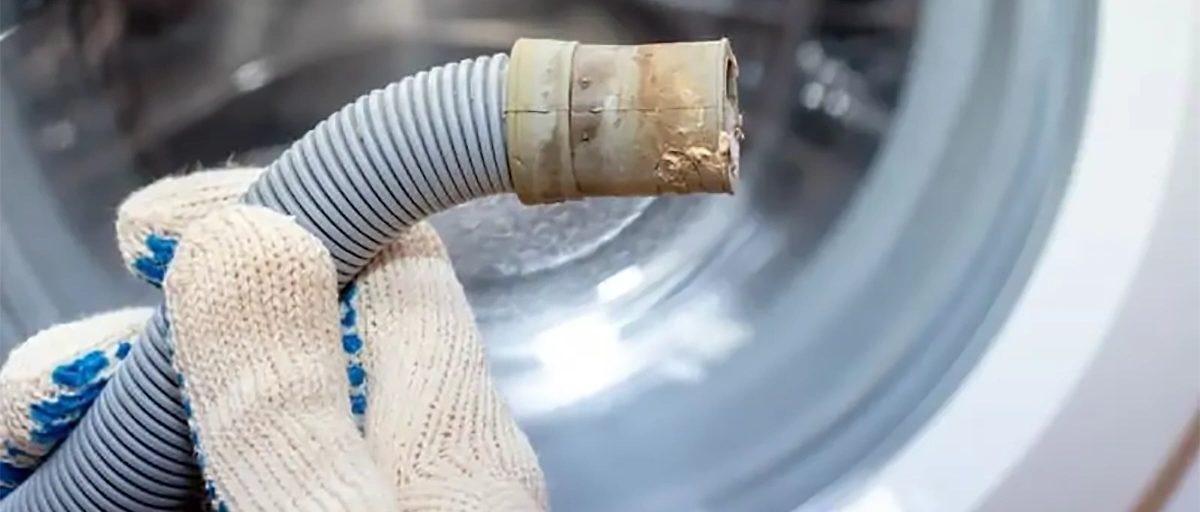Maintaining a smoothly functioning laundry drainage system is crucial for the efficient operation of your household. A clogged laundry drain can lead to a range of inconveniences, from overflowing water and foul odors to potential water damage. Whether dealing with a slow-draining washing machine or a completely blocked drain, understanding the underlying causes and implementing effective troubleshooting techniques can save you time, money, and frustration. In this article, we will delve into the various factors that can contribute to clogged laundry drains and how to clear clogged laundry drains.
Contents
Causes of Clogged Laundry Drains
When it comes to the frustration of a clogged laundry drain, understanding the underlying causes is crucial. Various factors contribute to these blockages, ranging from everyday debris to unexpected intrusions, all of which can disrupt the smooth flow of water in your laundry system.
Accumulation of Lint and Debris
One of the primary culprits behind clogged laundry drains is the accumulation of lint, fibers, and debris that escape from our clothes during washing cycles. Over time, these particles can build up within the drain pipes, impeding the flow of water and leading to slow drainage or complete blockages. We’ll explore the reasons behind this accumulation and suggest preventive measures to keep your drains clear.
Soap Scum and Detergent Build-up
While soap and detergent play a crucial role in cleaning your clothes, they can also contribute to the gradual buildup of residue within your drain pipes. This buildup, known as soap scum, can combine with other substances to create stubborn clogs. Discover how to strike a balance between effective cleaning and preventing detergent-related drainage issues.
Foreign Objects Accidentally Entering the Drain
In the hustle and bustle of daily life, it’s not uncommon for small objects to unintentionally find their way into the laundry drain. Items like coins, buttons, and even small toys can wreak havoc on your drainage system, causing blockages that disrupt water flow. We’ll provide strategies to both prevent foreign objects from entering the drain and safely remove them if they do.
Tree Root Infiltration
Surprisingly, the roots of nearby trees can also pose a threat to your laundry drain’s integrity. As roots seek out water sources, they can infiltrate underground pipes, causing cracks and blockages. Learn how to identify tree root infiltration and explore options for resolving this issue to prevent further damage.
Plumbing System Issues
Sometimes, the problem lies beyond the immediate vicinity of your laundry room. Issues within your home’s plumbing system, such as improper pipe installation or deteriorating pipes, can lead to drainage problems throughout your household. We’ll examine how to diagnose plumbing system-related clogs and when it’s time to call in a professional plumber for assistance.
Identifying a Clogged Laundry Drain
Recognizing the signs of a clogged laundry drain is the first step toward addressing the issue before it escalates into a more serious problem. A clogged drain can disrupt your daily routine and potentially lead to water damage if left untreated.

Slow Drainage in the Washing Machine
A noticeable decrease in the rate at which water drains from your washing machine is often an early sign of a clogged laundry drain. If you find your washing machine taking longer than usual to empty water at the end of a cycle, it’s a clear indication that a blockage might be hindering the water flow.
Water Backing Up into the Sink or Floor Drain
Perhaps one of the more concerning signs of a clogged laundry drain is when water starts backing up into other fixtures, such as sinks or floor drains, during or after a laundry cycle. This occurrence not only points to a clog but also signals that the blockage has reached a level of severity that requires prompt attention.
Unpleasant Odors from the Washing Machine
If your washing machine emits unpleasant odors that are more pungent than usual, a clogged drain could be to blame. Blockages can trap water and debris, creating an environment conducive to the growth of mold, mildew, and bacteria. These microorganisms can produce foul odors that permeate your laundry area.
Gurgling or Bubbling Noises During Drainage
Unusual sounds emanating from your washing machines or nearby drains, such as gurgling or bubbling noises, can indicate that air is trapped within the pipes due to a clog. As water tries to flow past the obstruction, it can cause these distinctive noises.
DIY Solutions for Unclogging
When faced with a clogged laundry drain, there are several do-it-yourself (DIY) solutions that you can try before seeking professional assistance. These methods can help dislodge minor clogs and restore proper drainage. Below are some ways how to fix a clogged laundry drain:
- Plunger: Just like unclogging a toilet, a plunger can be used to create pressure and dislodge the blockage in the drain. Make sure to seal the plunger over the drain opening and vigorously plunge several times to help break up the clog.
- Boiling Water: Pouring a pot of boiling water down the drain can help melt grease and soap scum that might be contributing to the clog. Be cautious when using this method with PVC pipes to avoid damaging them.
- Baking Soda and Vinegar: This natural and non-toxic combination can be effective in breaking down organic clogs. Start by pouring a cup of baking soda down the drain, followed by a cup of vinegar. Let the mixture fizz for about 15 minutes before flushing it with hot water.
- Wire Hanger or Drain Snake: If the clog is deeper within the pipes, you can use a wire hanger or a drain snake to physically break up and remove the blockage. Insert the tool into the drain and rotate it while applying gentle pressure to catch and pull out debris.
- Enzyme Cleaners: Enzyme-based drain cleaners are designed to break down organic matter that contributes to clogs. These cleaners are environmentally friendly and can help maintain clear drains when used periodically.
Avoiding Clogs in the Future
Prevention is key to avoiding the inconvenience of clogged laundry drain pipes. By adopting some simple habits, you can significantly reduce the risk of future clogs:

- Use a Mesh Lint Trap: Install a mesh lint trap on your washing machine’s discharge hose to catch lint and debris before they enter the drain.
- Empty Pockets: Encourage family members to empty their pockets before tossing clothes into the washing machine to prevent small objects from accidentally entering the drain.
- Limit Soap Usage: Use the appropriate amount of detergent to avoid excessive soap scum buildup in the pipes.
- Regular Maintenance: Flush your drains with hot water periodically to prevent buildup, and consider using enzyme cleaners to maintain clear pipes.
When to Call a Plumber for Clogged Laundry Drains
While DIY methods can resolve minor clogs, there are situations where professional intervention is necessary:
- Persistent Clogs: If your DIY attempts don’t resolve the issue or if the clog returns shortly after clearing, it’s a sign that a more stubborn blockage might be present.
- Multiple Fixtures Affected: If clogs are affecting multiple drains and fixtures in your home, it could indicate a more extensive plumbing problem that requires a professional assessment.
- Unusual Smells or Noises: Foul odors or strange noises during drainage might suggest a more complex issue within your plumbing system that requires expert attention.
- Limited Success with DIY Methods: If you’ve exhausted DIY solutions without success, it’s time to call a plumber who has the expertise and equipment to diagnose and address the problem effectively.
Remember, it’s better to seek professional help sooner rather than later to prevent further damage to your drainage system and to ensure the safety and functionality of your home’s plumbing.
FAQ about troubleshooting a clogged laundry drain
Clean the lint trap after every laundry load to prevent clogs in the clogged laundry drain pipe.
A plunger can be effective for some minor clogs in a clogged laundry drain, but not suitable for all types of blockages.
Chemical drain cleaners are often not safe for the environment and can harm clogged laundry drain pipes.
Lingering bad smells in your washing machine could be due to residual build-up even after unclogging the drain of a clogged laundry drain pipe.
Hiring a professional may not be necessary for minor clogs in a clogged laundry drain, but it’s advised if DIY methods don’t work or the problem persists.



